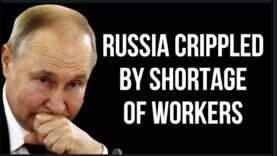RUSSIAN Workforce Shortage is Crippling Economy as War, Mobilization & Low Birth Rate Hurt Russia
Video Summary
Russia is currently facing a severe shortage of skilled workers, with an estimated 4.8 million vacancies unfulfilled due to a declining population and birth rate. According to the Russian Central Bank, the country is not producing enough workers to meet the demands of its growing economy. The shortage is attributed to a combination of short-term and long-term factors, including a mass exodus of people following the initial invasion of Ukraine and the announcement of a conscription of 300,000 men to fight in Ukraine.
Russia’s birth rate has been a long-standing issue, with the rate of children being born per female down from 2.9 in 1950 to 1.8 in 2022, well below the 2.1 children needed to maintain a stable population. The population pyramid shows a significant tapering in age groups below 40, resulting in fewer people entering the workforce.
This situation has led to a shortage of doctors, with reports that Russia is having to recruit from Africa to fill vacant positions. Additionally, there are concerns about the employment of children as young as 14 to produce equipment for the war in Ukraine. To address the issue, Russia may need to consider increasing the retirement age, which is currently relatively low compared to other developed economies.
The country is also facing a war economy, where companies are being incentivized to produce goods to support the war effort, which has led to a boom in the economy. However, this comes at the cost of pulling people out of other professions, including the healthcare sector, where salaries have decreased.
In the short term, Russia is facing the risk of further exodus of people, including up to 1 million men if another mobilization is announced. This could further exacerbate the problem, driving productivity down, and inflation up. The Russian Central Bank has acknowledged the issue, stating that the lack of workforce is now affecting Russian productivity, warning that the situation is likely to worsen over the next 3-6 months.
























